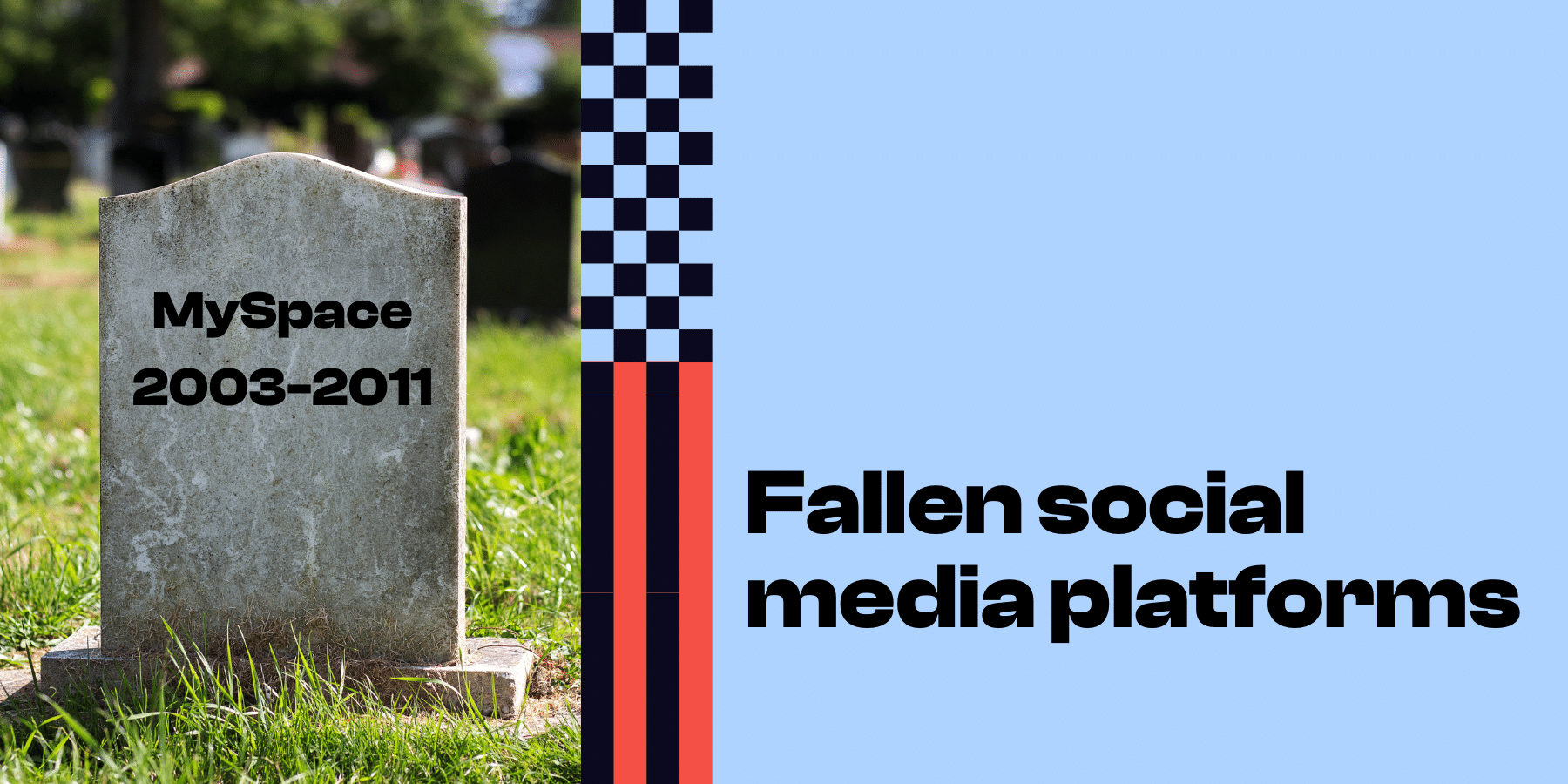Scrolling through time: A look back at social media moments of 2023

Last updated: 15 December 2023
Social media is in a constant state of change, with platforms evolving and trends rising and falling in the blink of an eye. Staying up-to-date with the latest social media trends is tricky unless you are an avid user like myself, who spends countless hours navigating the digital space (Don't ask me what my daily screen time is, trust me).
In this blog, we will delve into the changes that took place in the social media landscape of 2023, as well as offer predictions for the future of social media in 2024.
Dominance of short-form video
As we expected, TikTok and short-form videos continued to dominate the online space in 2023. With a staggering 1 billion active users worldwide, TikTok solidified its position as the most frequently used app globally. People spent an average of 23.5 hours per month on the platform, according to Sprout. The appeal of TikTok lies in its bite-sized video format, ranging from 10 seconds to 2 minutes in length. These short videos have a remarkable ability to captivate users' attention, making them watch hundreds of videos in a single session without even realising it.
In an era where attention spans are diminishing, opening your TikTok video with an amazing hook has become more crucial than ever. Users are constantly bombarded with content and have become used to scrolling through their feeds at lightning speed. To capture their attention, you need to make a strong impression right from the start. Whether it's a catchy dance routine, a hilarious skit, or a mind-blowing DIY hack, your video needs to stand out and entice viewers to keep watching.
The success of short-form videos on TikTok can be attributed to their ability to provide quick and easily digestible entertainment. In a world where time is a precious commodity, users appreciate the brevity and efficiency of these videos. They can consume a large volume of content in a short amount of time, making TikTok the go-to platform for quick entertainment and inspiration.
Rise and fall of platforms
In 2023, we witnessed a whirlwind of changes in the social media landscape, with platforms undergoing transformations and new ones entering the mix. One of the most notable shifts was Twitter's rebranding as X, a decision spearheaded by none other than Elon Musk himself. This move sent shockwaves through the online community, sparking discussions and debates about the future direction of the platform. While some users embraced the change with open arms, others were hesitant about the changes to the social media app, questioning whether it offered anything different from its predecessor. (I still call it Twitter, X doesn't have the same ring to it)
Amidst this rebranding frenzy, Meta, the parent company of Instagram, made a bold move by introducing Threads. This innovative app revolutionised the way we engage with short-form text, enabling users to post, reply, and follow profiles seamlessly. Threads quickly garnered attention and sparked curiosity among social media enthusiasts. However, despite its potential, the app failed to reach its intended audience due to inadequate marketing efforts. Many users remained unaware of its existence until a media frenzy created a buzz, but by then, it was already too late. The demise of Threads serves as a cautionary tale about the importance of effective marketing strategies in the ever-changing world of social media.
AI
The popularity of AI has skyrocketed in recent years, becoming a hot topic of discussion in the marketing world. Almost everyone involved in the industry is aware of its potential and the impact it can have on social media strategies. AI is now being utilised to assist in creating content and developing marketing plans, making it an invaluable tool for social media professionals.
AI has become a game-changer in the world of social media marketing. With its ability to analyse data and identify patterns, AI has proven to be a valuable tool in generating content ideas. Caption generators powered by AI make the process even more efficient by automatically creating captions that resonate with the target audience. Not only that, but social media scheduling apps like HubSpot, Hootsuite, and Sprout Social now incorporate AI features to optimise posting times, analyse engagement metrics, and suggest high-performing content. As AI technology continues to advance, it holds the potential to revolutionise social media marketing by offering personalised recommendations and automating content creation. With the power of AI, marketers can deliver targeted and impactful campaigns that truly make a difference.
De-influencing
A big trend we've seen this year is the rise of de-influencing and the shift towards influencers upgrading their skill set. In the past, influencer marketing was seen as a trustworthy source, with audiences often blindly following the recommendations of their favourite influencers without questioning their motives. However, as technology has advanced and audiences have become more savvy, this blind trust has diminished.
Audiences today are more informed and independent, conducting their own research and seeking out multiple opinions before making a purchasing decision. They no longer rely solely on the endorsements of influencers, especially as cancel culture and public scrutiny have led to instances of influencers being called out for dishonest practices. This lack of trust has prompted a significant shift in the influencer landscape.
In response to this trend, influencers have recognised the need to adapt and upgrade their skill set. Many have taken on the role of content creators, focusing on developing their own unique voice and providing valuable, unbiased content to their audience. They have realised that being a successful influencer requires more than just promoting products; it requires the ability to create engaging and authentic content that resonates with their audience.
One notable aspect of this de-influencing trend is the emergence of videos where influencers recommend inexpensive alternatives over expensive products. This is particularly significant in the current cost of living crisis, as it encourages people to make more budget-friendly choices without sacrificing quality or results. By showcasing affordable options that deliver similar outcomes, influencers are empowering their audience to make informed decisions that align with their financial circumstances.
More authenticity and UGC
This year, there has been a noticeable shift in the way brands and influencers are approaching their posting format. Audiences are becoming increasingly tired of seeing highly-produced and heavily-edited content that feels detached from reality. They are yearning for a more authentic and relatable experience. As a result, the demand for user-generated content (UGC) has skyrocketed.
Gone are the days when audiences were captivated by perfectly curated images and flawless videos. Instead, they want to see real people in their natural environments, going about their everyday lives. The appeal of grinning influencers in front of expensive cameras on a set is fading. Users find it increasingly difficult to relate to these influencers, as they don't look or live the same life as them.
The rise of UGC has been driven by the desire for authenticity. Audiences want to see content that reflects their own experiences and struggles. They want to connect with real people who face the same challenges they do. This shift towards everyday people content has gained immense popularity, as it allows audiences to feel a sense of belonging and relatability.
Brands and influencers have recognised the power of UGC in capturing the attention and loyalty of their audience. They understand that by showcasing real people using and enjoying their products in everyday scenarios, they can establish a deeper connection with their followers. This shift towards more authentic content has proven to be a successful strategy, as it resonates with audiences on a more personal level.
Social commerce
Social media platforms have recognised the immense potential of social commerce and are constantly evolving to cater to the needs of users. One such platform that has embraced this trend is TikTok, which recently introduced a shop feature. This addition has revolutionised the way users interact with products and has made it easier than ever to make purchases directly from the app.
The TikTok shop allows users to discover and explore a wide range of products directly within the app. This eliminates the need to switch to external websites or platforms to make a purchase. Users can simply tap on a product in a video and complete their purchase with just a few clicks. This seamless integration of commerce has simplified the buying process and created new opportunities for businesses and content creators to showcase their products and connect with a vast audience of engaged users. Other social media platforms are also exploring integrating commerce, recognising its immense potential in meeting the growing preference for convenience and instant gratification in online shopping.
Predictions for 2024
Looking forward to the year 2024, it is evident that the social media landscape will continue to evolve and fully embrace the power of AI. As platforms integrate more AI features, there is an undeniable sense of excitement surrounding Meta's cutting-edge 'audiobox', currently in beta testing. Furthermore, the prominence of virtual influencers is expected to soar, significantly shaping the future of social media marketing. In addition, we can anticipate a shift towards bite-sized and more concise content, as audience attention spans continue to diminish.
Photo finish across the finish line
As we look ahead to the future, the social media landscape is bound to continue evolving in surprising ways. We understand how difficult it can be to know all the latest updates and trends with social media. That's where we come in as your social media experts, equipped with all the experience and knowledge for social media campaigns. Don't hesitate to reach out to us if you need any help with social media campaigns.








